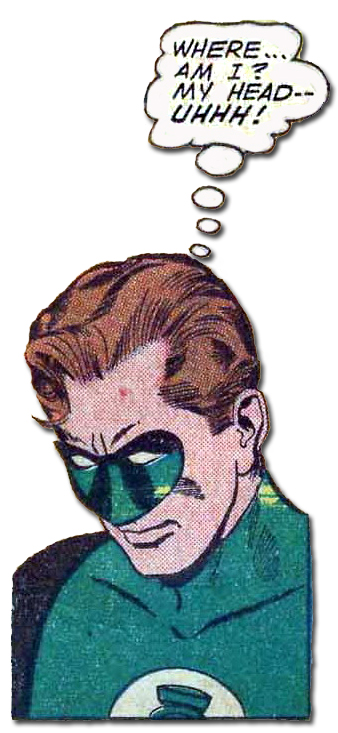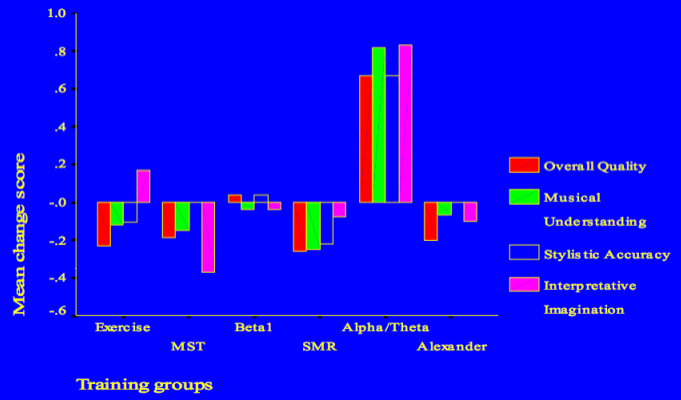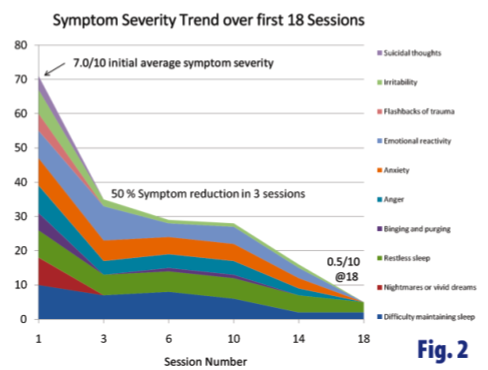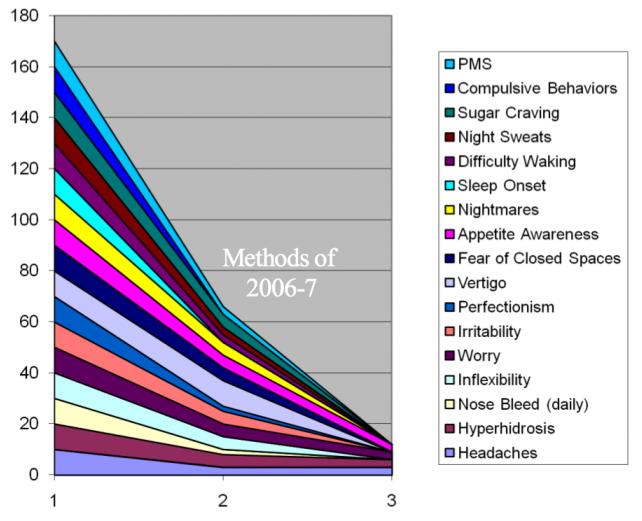 In many ways, looking around at my fellow bloggers, the lovely people who write in, hell some of the people I meet on the street, I feel a bit like a fraud.
In many ways, looking around at my fellow bloggers, the lovely people who write in, hell some of the people I meet on the street, I feel a bit like a fraud.
Really.
I’ve been depressed, sure. Cried at work, check. Stayed in house for extended periods of time, check. Almost lost job, check. Generally listless and lacking joy or motivation in almost any area, check. Totally emotionally vulnerable and reactive, check.
But really all that pales in comparison to what some of the people out there live through, are living through, would sometimes rather die than live another day of…seriously. What they “live” with is staggering.
Some of the worst sufferers? People with traumatic brain injury. TBI can cause everything I experience with ADD or depression times ten, with a touch of blinding headache, personality change, and memory loss, just to sweeten the deal. Or worse.
But here’s the thing.
I don’t care.
[Stay with me here…I’m pausing for dramatic effect]
I can empathise, sympathise, and many other ises, I’m human.
But we humans are all about the me, the I, and possibly the us, but mostly the first two. Because when it comes down to it, we’re trapped in here.
We have these marvelous machines that do all our seeing, smelling, thinking, feeling, and a million other jobs for us. They’re so important in fact, that we have to protect them by locking them away in a pitch black, bone-encased, fluid-cushioned cave. And that’s where they stay. Every so often one of our sense organs, or a nerve bundle, will send our big ol’ brain a message, just to let it know how things are going on the outside. But for all intents and purposes, that sucker’s doing the equivalent of a life sentence in solitary, without so much as the occasional conjugal visit from one of the other inmates (it does get the imaginary porn channel though so it’s not all bad).
And it doesn’t like it one bit.
Want to know how much your brain hates being trapped in there? Try what’s called a sensory deprivation tank. Like a seven-foot coffin filled with body-temperature water. You lie in it with a face mask or ear plugs, they shut the sound-proof door and voila…nothing…nothing…still nothing…um a little more nothing…no sound, no light, not much feel…nada. After a little while, your brain gets sick of not getting any input and starts making shit up. I kid you not. It is SO desperate to not be trapped in there without reading material that it just starts to make up visions, images, smells, whatever it has to to stop from going insane.
That’s crazy! who would design such an insane system? Of course we should have our brains on the outside. In neat transparent bubbles with little holes and stuff so it could see and hear everything without this complex eye and ear junk.
Unfortunately the world is a cruel place and the whole brain on the outside thing would pretty much guarantee that you wouldn’t survive falling off the couch, never mind a grade three classroom or a New York sidewalk.
So, despite a solid potential career as a Star Trek (call me geeky, I am so seeing this) extra, this isn’t going to work out. Stuck with the skull prison cell thing.
How do we know about things, trapped in there? Is the tree green? I dunno. I know a bunch of vision nerves told me about this light they saw a little while ago, and some sound nerves told me that some waves in the air were a lot like those other sound waves that happened a long time ago when the vision nerves were seeing those lights that mean “people” making those “talking” noises and one of them made the green noise while it was pointing to something that had the same sort of light coming off it. Was I seeing the same light as the other people shape? Um sure, if that people shape and I have exactly the same brain, with exactly the same eyeball and the same nerves connecting them. So…no, we weren’t. No two people have the same experience of the universe at the same time. We ain’t made that way. In fact it’s a freaking testament to the human social structure that we can talk to each other, never mind build cities, or make rockets, or breed and make more tiny little soon-to-be-messed up humans.
So…it’s a pretty tenuous system, no? There’s an awful lot riding on our skull’s ability to keep the brain intact and functioning. It’s an unbelievable complex system that can be severly damaged by just screaming at it enough (aka emotional abuse). What does actually hitting it do?
Well, when it gets whacked…things get sloppy – fast. We (me and all them doctor-y types) are coming to the realization that many of our most treasured moments on the sport field were the times when we were pounding our brain into a permanent stupor. Really. I don’t think those jocks started out that thick.
More and more, doctors and neuroscientists are seeing that even minor head injury leaves permanent brain damage. Got your bell rung? Had a concussion? Fallen off a horse? Done boxing? Crashed your bicycle without a helmet? Chances are you are now stupider than when you started. You might not notice. It might be subtle. You might be just a bit worse at math. Maybe you just don’t have the memory you had. Or maybe you get irritable easier now.
And maybe you were always like that.
The fact is that this skull of ours is real good at protecting our heads, but not so good at some other things, like being born.
Our heads are now so large in comparison to our hips (I blame the thighmaster) that we may be damaging the brains of our children in the birth process. Lack of oxygen during difficult labour, forceps, the drugs we take to ease the process may all be contributors. Pre and post labour scans show that up to 10 % of infants have significantly changed brainwave patterns immediately before and after birth. So either they are just really impressed with their new view, or one in ten of us got a raw deal at the outset.
Just so we are clear, I’m not talking about you. You’ve never been hit in the head, never played sports, never been in a car crash, and obviously, you work just fine…no way you could be one in ten…
My record is clearly less stellar. Seven years of rugby, playground “accidents” (yes I’m talking to you Patrick), skiing, a minor concussion running around a gym with my head down, getting mugged by a guy with a bat. Any one of these might have seriously affected my ability to function. And brain injury tends to be cumulative. So maybe all of them.
And really, even if you had some minor brain injury, it’s not like you really notice the difference. Why would you actually do anything about it?
Because you can, first off. Neurotherapy has a great success rate helping even major head injuries. One small study noted improvements from 61% to 181% in the functioning of participants with brain injury. It doesn’t repair damage, but it can help your brain train surrounding areas to be the best they can be, taking up some of the slack.
Second, IMHO, it is your god-given right to be the best you can be. If you broke your arm, you’d go to the doctor and get a cast. This is the same thing.
So what I guess I’m saying is…life is hard. Our brains get broken. You don’t have to take that shit lying down.
Wordsworth said “We come into this world trailing clouds of glory, Getting and spending [and getting the smackdown – ed.] we lay waste our powers.”
When I was young, I always wanted to be a super hero with powers and stuff. Now that I have the prospect of fixing some of those brain bumps and bruises we all seem to acquire, I do believe I’m gonna go out and reclaim a bit of that glory. And maybe a cape.
 Neurotherapy, as it turns out, has the capacity to be as much a roller coaster as anything else in life. For me, what pulls the brake off the beast is the sense of stepping out into a different skin. Then wondering if you get to keep that skin, then feeling like you might, then knowing you can’t possibly, then…God dammit, I tire my self out in a single sentence. How the fuck would anyone else stand being around me for any length of time? It’s good kids have to legally hang around for a while. Just sayin.
Neurotherapy, as it turns out, has the capacity to be as much a roller coaster as anything else in life. For me, what pulls the brake off the beast is the sense of stepping out into a different skin. Then wondering if you get to keep that skin, then feeling like you might, then knowing you can’t possibly, then…God dammit, I tire my self out in a single sentence. How the fuck would anyone else stand being around me for any length of time? It’s good kids have to legally hang around for a while. Just sayin.
 Here’s a question for the depressed, the trapped, or the merely unmotivated.
Here’s a question for the depressed, the trapped, or the merely unmotivated. Whoops.
Whoops. It could just be the neurotherapy talking but, man what a great bunch of people. I’ve been in classes and conferences where you were wondering why the exit door seemed to be moving in slow motion, dreading that someone would catch up with you. I can honestly say that there was not a single person that I met with whom I wouldn’t cheerfully spend a day. Interesting, dedicated, open and open-minded. A good few will be friends, collaborative partners and potentially colleagues for years, I’m quite sure.
It could just be the neurotherapy talking but, man what a great bunch of people. I’ve been in classes and conferences where you were wondering why the exit door seemed to be moving in slow motion, dreading that someone would catch up with you. I can honestly say that there was not a single person that I met with whom I wouldn’t cheerfully spend a day. Interesting, dedicated, open and open-minded. A good few will be friends, collaborative partners and potentially colleagues for years, I’m quite sure. First things first, I felt fantastic today. No treatment the last two days (obviously, since I’m in class) and absolutely no fall off on concentration, motivation or mood. Not over the top, just really really good. Before Neurotherapy, I often had a sense of fear or overwhelming exhaustion when starting a task. It’s just gone…completely. Was discussing this stuff with some of the counselors in the room (can’t throw a rock without hitting one and even if you did they would just ask about my feelings. Except the woman from New York. I’m pretty sure she’d just hit me with the nearest chair.). Mentioned trying anti-depressants back home, and the fact that, while they helped mood some, I never felt myself, not sharp, not clever. Never stayed on them as a result. This isn’t like that at all. I don’t expect it would last if I stopped now, but I have absolutely no intention of stopping before I finish the 20 or 30 or 40 sessions I need to really make this, well, maybe not permanent but close enough for me.
First things first, I felt fantastic today. No treatment the last two days (obviously, since I’m in class) and absolutely no fall off on concentration, motivation or mood. Not over the top, just really really good. Before Neurotherapy, I often had a sense of fear or overwhelming exhaustion when starting a task. It’s just gone…completely. Was discussing this stuff with some of the counselors in the room (can’t throw a rock without hitting one and even if you did they would just ask about my feelings. Except the woman from New York. I’m pretty sure she’d just hit me with the nearest chair.). Mentioned trying anti-depressants back home, and the fact that, while they helped mood some, I never felt myself, not sharp, not clever. Never stayed on them as a result. This isn’t like that at all. I don’t expect it would last if I stopped now, but I have absolutely no intention of stopping before I finish the 20 or 30 or 40 sessions I need to really make this, well, maybe not permanent but close enough for me. So, today was day one of the four-day course on neurotherapy and clinical practice, designed largely for clinicians (doctors, psychiatrists, psychologists, nurses, counselors, etc.) who intend to provide neurotherapy to patients in their care.
So, today was day one of the four-day course on neurotherapy and clinical practice, designed largely for clinicians (doctors, psychiatrists, psychologists, nurses, counselors, etc.) who intend to provide neurotherapy to patients in their care.

